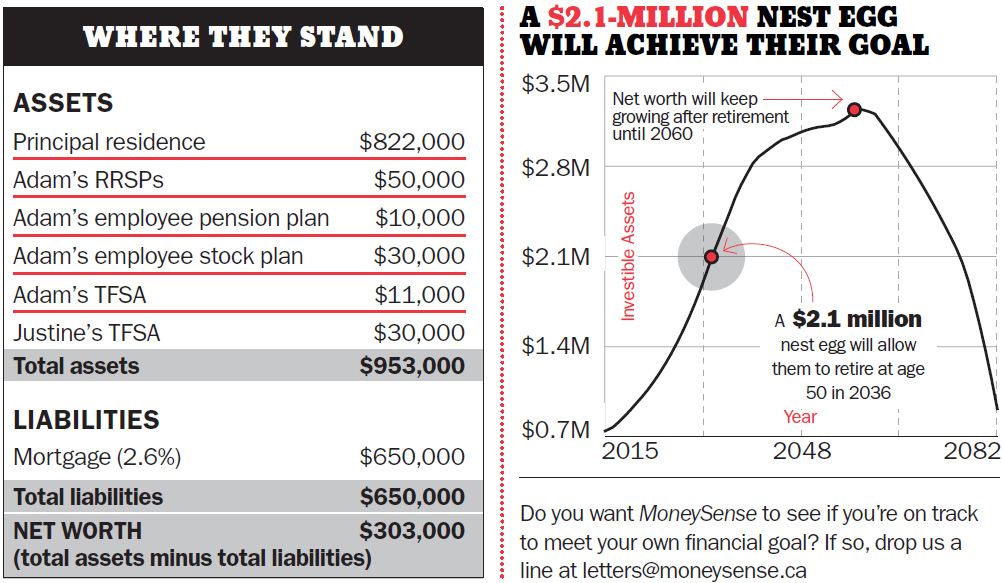Are they on track to retire at 50?
Adam Danyleko, 28, and Justine Oshust, 25, have a big mortgage but want to retire early with $100,000 in net income annually
Advertisement
Adam Danyleko, 28, and Justine Oshust, 25, have a big mortgage but want to retire early with $100,000 in net income annually

 Do you want MoneySense to see if you’re on track to meet your own financial goal? If so, drop us a line at [email protected]
Do you want MoneySense to see if you’re on track to meet your own financial goal? If so, drop us a line at [email protected]
Share this article Share on Facebook Share on Twitter Share on Linkedin Share on Reddit Share on Email